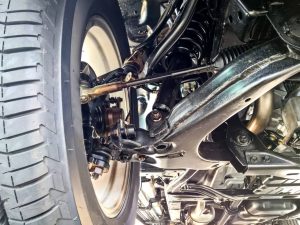 A smoother ride isn’t just about comfort — your suspension plays a major role in safety.
A smoother ride isn’t just about comfort — your suspension plays a major role in safety.
If your car feels a little rougher lately, or you’re hearing new clunks and rattles, your suspension might be telling you it needs attention. Most drivers don’t think about shocks, struts, or other suspension components until something feels “off,” but by that point, wear is already well underway.
At Tried and True Auto in Salem, Utah, we see worn suspension systems every week — and catching them early can save you money, prevent uneven tire wear, and keep your vehicle handling safely.
Here’s how to tell if your suspension might be due for service.
🚘 1. Your Ride Feels Bumpy, Floaty, or “Loose”
Your suspension’s job is to absorb bumps and keep your tires firmly on the road.
If you’re noticing:
-
Excessive bouncing after going over a bump
-
A “floating” sensation at highway speeds
-
A rougher, shakier ride than usual
…it’s a strong sign your shocks or struts are worn out. They lose effectiveness gradually, so changes can be subtle at first.
🔊 2. You Hear Clunks, Creaks, or Knocking Noises
If your suspension makes noise when you turn, accelerate, brake, or go over bumps, that’s your car’s way of saying something is loose or worn.
Common causes include:
-
Worn ball joints
-
Bad control arm bushings
-
Loose sway bar links
-
Broken strut mounts
Noise = movement, and movement in the suspension is almost never good.
🚗 3. Your Car Pulls to One Side
If your vehicle drifts left or right, even on a straight road, the issue might be:
-
Worn suspension components
-
Uneven tire wear
-
Alignment problems
A worn component throws off the geometry of your steering and suspension.
If the pull gets worse when braking, come see us ASAP — that’s a safety issue.
🛞 4. Uneven or Rapid Tire Wear
Your tires tell a story. If you see:
-
Cupping
-
Feathering
-
Bald spots
-
Inside/outside edge wear
…it’s a major sign your suspension isn’t holding the wheels at the correct angle.
Even brand-new tires won’t last long if the suspension isn’t holding them squarely on the road.
🧰 5. Nose-Diving or Squatting When You Brake or Accelerate
Worn struts and shocks struggle to control the forces put on the vehicle.
Common symptoms include:
-
Nose dives when braking
-
Rear squats when accelerating
-
Body roll when turning
Not only does this feel sloppy — it increases stopping distance and reduces stability in emergency maneuvers.
🧍 6. Your Car Sits Unevenly or Looks “Lopsided”
If one corner of your car sits lower than the others, it could be:
-
A broken spring
-
Collapsed strut
-
Damaged suspension arm
This can quickly lead to major tire and alignment problems.
🔧 7. You Hit a Certain Age or Mileage Point
Suspension wears slowly, and most components start showing age around:
-
70,000–100,000 miles for shocks and struts
-
Sooner for vehicles that tow, haul heavy loads, or frequently drive rough roads
If your car is in this mileage range, a suspension inspection is a smart move.
🏁 Why Fixing Suspension Early Matters
Ignoring suspension issues can lead to:
-
Premature tire replacement
-
Poor braking performance
-
Alignment problems
-
Increased wear on steering components
-
Loss of control in emergency situations
A healthy suspension means:
-
Better ride quality
-
Better safety
-
Better tire life
-
Better fuel economy
-
Better handling
🔧 Need Suspension Help? We’ve Got You.
At Tried and True Auto in Salem, Utah, our techs can diagnose suspension issues quickly using proper testing — not guesswork. Whether it’s shocks, struts, ball joints, bushings, or a simple alignment, we’ll show you exactly what’s wrong and help you make the right call.
Honest diagnostics. Quality parts. Local shop care.
That’s what we’re known for.

Recent Comments